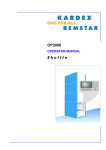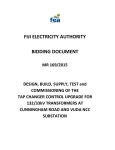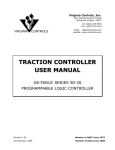Download User Manual
Transcript
Energy Analyzer Energy Analyzer Rail Mounted Energy Analyzer Electronic Multimeter User Manual 1 TABLE OF CONTENTS SECTION 1 GENERAL INFORMATION............................................................5 1.1 1.2 1.3 1.3.1 1.3.2 1.3.3 1.4 1.5 Device Features and Model Selection.................................................................. 5 Correct Usage and Conditions For Safety........................................................... 6 Panel Definitions.......................................................................................................... 7 Ecras Definitions.......................................................................................................... 7 KLEA 110P Definitions............................................................................................... 8 POWYS Definitions...................................................................................................... 9 Menu Structure..........................................................................................................10 Four Quadrant Representation ............................................................................11 SECTION 2 INSTALLATION.............................................................................13 2.1 Preparing for Installation........................................................................................13 2.2Mounting......................................................................................................................13 2.3 Connection Diagrams..............................................................................................14 2.3.1 Star and Delta Connections ..................................................................................14 2.3.2 Digital Output Connection Diagram..................................................................14 2.4 Dimensions (mm)......................................................................................................15 SECTION 3 MENUS..........................................................................................17 3.1 Instantaneous Measurement Menus ................................................................17 3.2 Maximum, Minimum ve Demand Menus.........................................................19 3.3 Energy Meters Menu (Enr)......................................................................................22 3.3.1 Assigning Predefined Value for Energy Meters ..............................................23 3.4 Counters Menu (Cnt)................................................................................................23 3.5 Settings Menu (SEt)..................................................................................................23 3.5.1 Basic Settings Menu (bSc)......................................................................................27 3.5.2 Alarm Settings Menu (ALr).....................................................................................27 3.5.3 Alarm Relay Settings Menu (OUt)........................................................................28 3.5.4 Demand Period Setting Menu (dEt)....................................................................28 3.5.5 Password Settings Menu (Pın)..............................................................................28 3.5.6 RS485 Settings Menu (485)....................................................................................29 3.5.7 Digital Input Settings Menu (DIn).......................................................................29 3.5.8 Pulse Output Settings Menu (PuL).....................................................................30 3.5.9 Clear Menu (CLr).......................................................................................................30 3.6 Save Procedure...........................................................................................................31 3.6.1 Changing Value/Setting .........................................................................................31 3.6.2Saving............................................................................................................................31 SECTION 4 RS485 COMMUNICATION..........................................................33 4.1 4.1.1 4.2 Readable and Writable Data .................................................................................33 Alarm Flags..................................................................................................................42 Multiple Choice Settings via Modbus ...............................................................44 SECTION 5 FACTORY DEFAULT SETTINGS .................................................46 SECTION 6 TECHNICAL SPECIFICATIONS...................................................49 2 FIGURES Figure 1-1 Figure 1-2 Figure 1-3 Figure 1-4 Figure 2-1 Figure 2-2 Figure 2-3 Figure 2-4 Figure 3-1 Figure 3-2 Figure 3-3 Figure 3-4 Ecras Front Panel.......................................................................................................... 7 110P Front Panel.......................................................................................................... 8 Powys Front Panel....................................................................................................... 9 Four Quadrant Representation.............................................................................11 Connection Diagram................................................................................................14 Digital Output Connection Diagram..................................................................14 Dimensions for Klea and Ecras..............................................................................15 Dimensions for Powys.............................................................................................15 Voltage (Phase-Neutral) Display..........................................................................18 Minimum Voltage (Phase-Neutral) Display......................................................21 Import Active Energy Display...............................................................................22 Alarm Example...........................................................................................................28 TABLES Table 1-1 Table 1-2 Table 3-1 Table 3-2 Table 3-3 Table 4-1 Table 4-2 Table 4-3 Model Comparison..................................................................................................... 5 Menu Structure..........................................................................................................10 Instantaneous Measurements..............................................................................17 Maximum, Minimum and Demand Values.......................................................20 SEt Menu Tree.............................................................................................................24 Readable and Writable Data..................................................................................33 Alarm Flags..................................................................................................................42 Description List..........................................................................................................44 3 Energy Analyzer Rail Mounted Energy Analyzer Electronic Multimeter SECTION 1 GENERAL INFORMATION 4 SECTION 1 GENERAL INFORMATION SECTION 1GENERAL INFORMATION 1.1 Device Features and Model Selection Ecras, Powys and Klea 110P are designed to measure current, voltage, harmonic etc. in 3 phase system. And also they have below features as optional. l Modbus Communication l Energy meters l Two tariffs l Saving maximum, minimum and demand values l On hour, run hour and int counter features l DIO (Digital input/output) l Alarm relay outputs l Error Leds for phase sequence and phase failure l THDV, THDI l 1-31 current and voltage harmonics All models and their features are shown in below table. Users can select the most suitable one according to their demands. Table 1-1 Model Comparison Type of device enclosure Basic measurements (V,VLL, I, IN, F, Cos φ, PF, P, Q, S, THD) 1-31 Harmonics Max-Min Value Demand Values (I, P, Q, S) On hour, Run Hour, Int Counter Energy Meters Assigning alarm to the parameters Alarm Relay RS485 Digital Input Digital Output Indicators and leds Order no ECRAS 100 ECRAS 120 ECRAS 200 ECRAS 220 KLEA 110P POWYS 3100 POWYS 3101 panel panel panel panel panel rail rail l l l l l l l l l l l l l l l l l l l l l l l l - - - - l - l 1 tariff 1 tariff 1 tariff 1 tariff 2 tariffs - l - l l l 606210 2 pcs. 2 pcs. 2 pcs. l l l 1 pc. 2 pcs. l l l l 606211 606212 606213 606180 5 1 tariffs 2 tariffs - l 2 pcs. l l 2 pcs. 2 pcs. 606300 606303 SECTION 1 GENERAL INFORMATION 1.2 Correct Usage and Conditions For Safety l Installation and wiring must be performed by authorized technicians in accordance with the instructions in the user manual. Do not commission the device before proper wiring. l Make sure the device is de-energized before connecting to the mains. l Short circuit the k-l terminals of the current transformer in another location before disconnecting the current transformers. Failing to do so will cause dangerous high voltages in the secondary terminals of the current transformers. l Use a dry cloth to clean the device. Do not use alcohol, thinner or any abrasive materials. l Make sure all wiring is properly made before commissioning the device. l Do not open the device. There are no serviceable parts by the user. l Keep the device away from humidity, water, vibrations and dust. l It is advisable to connect a circuit breaker or an automatic fuse between the current input of the device and the mains (2 amps). The manufacturer does not assume any responsibility for any undesired consequences if the above measures are not adhered to. 6 SECTION 1 GENERAL INFORMATION 1.3 Panel Definitions 1.3.1 Ecras Definitions Front Panel Figure 1-1 Ecras Front Panel 1, 2, 3, 4, 5 6, 7, 8 9 10, 11 12 13 14 15 16 17 18 19 20 21 22 23 24 25 26 27 28, 30, ..,36 29, 31, ..,37 38 39 40 41 Indicators (7 segment displays). Phase on/off LEDs. (L1, L2, L3) Alarm LED (ALM). Lights in case of an alarm. (available for Ecras 120 and Ecras 220) Relay LEDs (OUT 1, OUT 2). Lights when the relay is engaged. (available for Ecras 120 and Ecras 220) VL-N LED (V ). Lights when displaying the phase to neutral currents. VLL LED (VLL). Lights when displaying the phase to phase currents. Current LED (I). Lights when displaying the currents for the phases. CosØ LED (Cos Ø). Lights when displaying the cosØ for the phases. Power Factor LED (PF). Lights when displaying the PFs for the phases. Active power LED (P). Lights when displaying the active powers for the phases. Reactive power LED (Q). Lights when displaying the reactive powers for the phases. Apparent power LED (S). Lights when displaying the apparent powers for the phases. Total Harmonic Distortion LED (THD). Lights when displaying THDs for the phases. Demand LED (Dem). Lights when displaying the demand values. 1. Phase QCap. LED (1 ).Lights when the load for the first phase is capacitive. 2. Phase QCap. LED (2 ). Lights when the load for the second phase is capacitive. 3. Phase QCap. LED (3 ). Lights when the load for the third phase is capacitive. System QCap. LED ( T ). Lights when the total system load is capacitive. Maximum LED (Hi). Lights when displaying the maximum values. Minimum LED (Lo). Lights when displaying the minimum values. Mega LED (M). Lights when the indicated value is in MEGA units. Kilo LED (k). Lights when the indicated value is in KILO units. Right arrow key. Use this key to switch between the menus, enter submenus and move through the indicator digits. Up arrow key. Use this key to switch between the menus and change the numerical values. Left arrow key. Use this key to switch between the menus, return to the upper menu level and confirm the selected value. Down arrow key. Use this key to switch between the menus and change the numerical values. Back Panel l1-k1 , l2-k2 , l3-k3 : Current measurement inputs V1, V2, V3, N : Voltage measurement inputs D+, GND, D- : RS 485 (available for Ecras 200 and Ecras 220) out1, out2 : Alarm relay outputs (available for Ecras 120 and Ecras 220) Un : Power supply 7 SECTION 1 GENERAL INFORMATION 1.3.2 KLEA 110P Definitions Front Panel Figure 1-2 110P Front Panel 1, 2, 3, 4, 5 6, 7, 8 9 10, 11 12 13 14 15 16 17 18 19 20 21 22 23 24 25 26 27 28, 30, ..,36 29, 31, ..,37 38 39 40 41 Indicators (7 segment displays). Phase on/off LEDs. (L1, L2, L3) Alarm LED (ALM). Lights in case of an alarm. Relay LEDs (OUT 1, OUT 2). Lights when the relay is engaged. VL-N LED (V ). Lights when displaying the phase to neutral currents. VLL LED (VLL). Lights when displaying the phase to phase currents. Current LED (I). Lights when displaying the currents for the phases. CosØ LED (Cos Ø). Lights when displaying the cosØ for the phases. Power Factor LED (PF). Lights when displaying the PFs for the phases. Active power LED (P). Lights when displaying the active powers for the phases. Reactive power LED (Q). Lights when displaying the reactive powers for the phases. Apparent power LED (S). Lights when displaying the apparent powers for the phases. Total Harmonic Distortion LED (THD). Lights when displaying THDs for the phases. Demand LED (Dem). Lights when displaying the demand values. 1. Phase QCap. LED (1 ). Lights when the load for the first phase is capacitive. 2. Phase QCap. LED (2 ). Lights when the load for the second phase is capacitive. 3. Phase QCap. LED (3 ). Lights when the load for the third phase is capacitive. System QCap. LED ( T ). Lights when the total system load is capacitive. Maximum LED (Hi). Lights when displaying the maximum values. Minimum LED (Lo). Lights when displaying the minimum values. Mega LED (M). Lights when the indicated value is in MEGA units. Kilo LED (k). Lights when the indicated value is in KILO units. Right arrow key. Use this key to switch between the menus, enter submenus and move through the indicator digits. Up arrow key. Use this key to switch between the menus and change the numerical values. Left arrow key. Use this key to switch between the menus, return to the upper menu level and confirm the selected value. Down arrow key. Use this key to switch between the menus and change the numerical values. Back Panell1-k1 , l2-k2 , l3-k3 : Current measurement inputs V1, V2, V3, N : Voltage measurement inputs D+, GND, D- : RS 485 DIN+, DIN- : Digital Inputs DO1+, DO1-, DO2+, DO2- : Digital Outputs out1, out2 : Alarm Relay Outputs Un : Power Supply 8 SECTION 1 GENERAL INFORMATION 1.3.3 POWYS Definitions 1 2 3 4 8 5 6 7 Figure 1-3 Powys Front Panel 1 2 3 4 5 6 7 8 Digital Outputs: Output1; DO1- and DO1+, Output2; DO2- and DO2+ (available for Powys 3101) Digital Inputs. Input1:DIN1 and DGND, Input2:DIN2 and DGND (available for Powys 3101) RS485 Communication Relay Outputs: OUT 1 and OUT 2 (available for Powys 3101) Power supply (Un) Voltage Measurement Inputs (V1, V2, V3, N) Current Measurement Inputs (I1-k1, I2-k2, I3-k3) Power LED: It is turned on when the device is energized. 9 SECTION 1 GENERAL INFORMATION 1.4 Menu Structure Menus and moving through them are shown in the below table. Table 1-2 Menu Structure Instantaneous Values Maximum Values Minimum Values Demand Values Voltage (L- N) Voltage (L- N) Maximum Voltage (L- N) Minimum … Voltage (L- L) Voltage (L- L) Maximum Voltage (L- L) Minimum … Current Current Maximum Current Minimum Current Demand Cos φ Cos φ Maximum Cos φ Minimum Power Factor Power Factor Maximum Power Factor Minimum Active Power Active Power Maximum Active Power Minimum Active Power Demand Reactive Power Reactive Power Maximum Reactive Power Minimum Reactive Power Demand Apparent Power Apparent Power Maksimum Apparent Power Minimum Apparent Power Demand THDV THDV Maximum THDV Minimum … THDI THDI Maximum THDI Minimum … Energy Meters … … … Counters … … … Setting … … … Upper menu structure will be changed according to version of Klea and Ecras. Powys has not display or LCD screen. So upper menu is not valid for Powys. 10 SECTION 1 GENERAL INFORMATION 1.5 Four Quadrant Representation The angle(Ø) between voltage and current provides us information about the direction of energy flow. A positive sign for active/reactive power indicates that active/reactive power is consumed. And also a negative sign for active/reactive power indicates that active/reactive power is generated. Reactive Power QUADRANT -2 QUADRANT -1 P => negative Q => positive & capacitive CosØ => capacitive PF => negative P => positive Q => positive & inductive CosØ => inductive PF => positive Meters Exp. Active & Imp. Reactive Meters Imp. Active & Imp. Reactive S Q P QUADRANT -3 Active Power QUADRANT -4 P => negative Q => negative & inductive CosØ => inductive PF => negative P => positive Q => negative & capacitive CosØ => capacitive PF => positive Meters Exp. Active & Exp. Reactive Meters Imp. Active & Exp. Reactive Figure 1-4 Four Quadrant Representation NOTE: If the signs of active and reactive power are examined, it can be defined the quadrant that Klea measures. In order to understand P and Q signs in Klea 110P and Ecras, instantaneous displays for P and Q must be checked. If active power display is seem constantly, it means active power(P) is positive. If it is blinked, it means active power(P) is negative. If reactive power(Q) display is seem constantly, it means reactive power(Q) is positive. If it is blinked, it means reactive power(Q) is negative. NOTE: Signs of P and Q can be reached through modbus communication. e.g.; P= +10kW, Q= +5kVAr P= -10kW, Q= +5kVAr P= -10kW, Q= -5kVAr P= +10kW, Q= -5kVAr => Quadrant-1 => Quadrant-2 => Quadrant-3 => Quadrant-4 11 Energy Analyzer Rail Mounted Energy Analyzer Electronic Multimeter SECTION 2 INSTALLATION 12 SECTION 2 INSTALLATION SECTION 2INSTALLATION 2.1 Preparing for Installation The purchased product may not include all hardware options referred in this document. This situation does not constitute an impediment to the electrical installation. Assembly and related connections of the product, must be implemented by authorized persons in accordance with the instructions of user manual. The device must not be put into service if the operator is not sure that all connections are correctly accomplished. 2.2 Mounting KLEA and Ecras are placed vertically into the gap located in the panel. After the product is placed into the panel, fixing brackets should be installed on the product. After that it should be fixed to the panel wall with the screws. Powys is replaced onto 35mm standart rail. Before wiring up voltage and current ends to KLEA, you must be sure that the power is cut. The product is connected to current transformer(s). Before disconnecting current transformer leads, be sure that they are short circuited elsewhere or connected to a parallel load which has sufficiently low impedance. Otherwise dangerously high voltages will be induced at the current transformer leads. Same phenomena also apply for putting into service. 13 SECTION 2 INSTALLATION 2.3 Connection Diagrams 2.3.1 Star and Delta Connections Star Connection (with neutral) Measuring Current Delta Connection (no neutral) Measuring Voltage Measuring Current Measuring Voltage Figure 2-1Connection Diagram For Ecras and KLEA; L1, L2, L3 LEDs blink simultaneously and very slowly (per second) phase sequence (voltage) error. Any/All of L1, L2, L3 LED(s) blink(s) slowly (per 0.5 second) voltage connection(s) of the related phase(s) is/are missing. Any/All of L1, L2, L3 LED(s) blink(s) quickly (per 0.2 second) current connection(s) of the related phase(s) is/are missing. 2.3.2 Digital Output Connection Diagram DO (+) External DC Power Supply must be connected. (5-30VDC) DO (-) + - Figure 2-2Digital Output Connection Diagram 14 yük SECTION 2 INSTALLATION 2.4 Dimensions (mm) Figure 2-3Dimensions for Klea and Ecras 57 126 91 Figure 2-4Dimensions for Powys 15 91 Energy Analyzer Rail Mounted Energy Analyzer Electronic Multimeter SECTION 3 MENUS 16 SECTION 3 MENUS SECTION 3MENUS 3.1 Instantaneous Measurement Menus NOTE: In order to reach Powys measurement, operator should use modbus communication. Voltage (L-N and L-L), current, neutral current, cosØ, power factor, active power, reactive power, apparent power, THDV and THDI values are shown in instantaneous menu. See Table 3-1 for parameters displayed in the menus and activated LEDs. Table 3-1 Instantaneous Measurements LED 1 LED 2 Active Menu 1st Indicator 2nd Indicator 3rd Indicator V - Voltage (PhaseNeutral) Voltage L1 Voltage L2 Voltage L3 VLL - Voltage (PhasePhase) Voltage L1-L2 Voltage L2-L3 Voltage L3-L1 I - Current Current L1 Current L2 Current L3 Total Current Cos φ - Cos φ Cos φ1 Cos φ2 Cos φ3 - PF - Power Factor P - Q - S - THD V I 4th Indicator Average Voltage (Phase-Neutral) Average Voltage (PhasePhase) 5th Indicator Network Frequency Network Frequency Network Current - PF1 PF2 PF3 System PF Active Power Active Power Active Power Total Active Active Power L1 L2 L3 Power Reactive Reactive Reactive Total Reactive Reactive Power Power L1 Power L2 Power L3 Power Apparent Apparent Apparent Apparent Total Apparent Power Power L1 Power L2 Power L3 Power THDV1 THDV2 THDV3 Total Harmonic Distortion THDI1 THDI2 THDI3 - 1 Q / Cosφ Cosφ and reactive power for the L1 phase is capacitive, otherwise is inductive. 2 Q / Cosφ Cosφ and reactive power for the L2 phase is capacitive, otherwise is inductive. 3 Q / Cosφ Cosφ and reactive power for the L3 phase is capacitive, otherwise is inductive. T Q Total reactive power is capacitive, otherwise is inductive. 17 - SECTION 3 MENUS PF P Q S THD Dem 1 2 3 T Hi Lo Figure 3-1Voltage (Phase-Neutral) Display e.g: When “V” LED is turned on: l Device is in phase-neutral voltage menu. l Line-1 phase-neutral voltage is monitored in the first display. l Line-2 phase-neutral voltage is monitored in the second display. l Line-3 phase-neutral voltage is monitored in the third display. l Average phase-neutral voltage of three phase is monitored in fourth display. l Network frequency is monitored in fifth display For Ecras and KLEA; L1, L2, L3 LEDs blink simultaneously and very slowly (per second) phase sequence (voltage) error. Any/All of L1, L2, L3 LED(s) blink(s) slowly (per 0.5 second) voltage connection(s) of the related phase(s) is/are missing. Any/All of L1, L2, L3 LED(s) blink(s) quickly (per 0.2 second) current connection(s) of the related phase(s) is/are missing. When the product is mounted on a panel which consumes power, active power (P) must be positive. If active power (P1, P2 or P3) display is blinking in L-H and/or instantaneous menu, operator should cross connect k-l leads of the current transformer. 999 000 000” (999 MEGA) is the highest number that can be displayed in 7 segment displays of the product. If this number is exceeded; • Related “k”, “M” LEDs will turn on (flash constantly). • “888” number will be monitored in the related 7 segment display. This phenomenon applies for “Instantaneous” and “L-H” menus. 18 SECTION 3 MENUS 3.2 Maximum, Minimum ve Demand Menus Minimum and maximum values are calculated and stored in the non-volatile memory for below parameters. l Voltage (phase-neutral, phase-phase) l Neutral current l Frequency l CosØ l Power factor l THDV l THDI Besides maximum and minimum values, demand values are calculated and stored in the non-volatile memory for below parameters. l Current l Active power l Reactive power l Apparent power Use the left or right arrow keys to display the max. and min. measurements and demand values within the measurement menus. Table 3-1 shows the menu movements. Table 3-2 shows the indicated values and active LEDs in the corresponding menu. 19 SECTION 3 MENUS Table 3-2 Maximum, Minimum and Demand Values LED 1 LED 2 LED 3 Hi - Lo - Hi - Lo - Hi - Lo - Dem - Hi - Lo Hi - Cos φ1 Min. PF1 Max. Cos φ2 Min. PF2 Max. Cos φ2 Min. PF3 Max. System PF Max. - Lo - Lo - Dem - Hi - Lo - Dem - Hi - Lo - Hi V THDV1 Max. THDV2 Max. PF3 Min. Active Power L3 Max. Active Power L3 Min. Active Power L3 Demand Reactive Power L3 Max. Reactive Power L3 Min. Reactive Power L3 Demand Apparent Power L3 Max. Apparent Power L3 Min. Apparent Power L3 Demand THDV3 Max. System PF Min. Total Active Power Max. Total Active Power Min. Total Active Power Demand Total Reactive Power Max. Total Reactive Power Min. Total Reactive Power Demand Total Apparent Power Max. Total Apparent Power Min. Dem PF2 Min. Active Power L2 Max. Active Power L2 Min. Active Power L2 Demand Reactive Power L2 Max. Reactive Power L2 Min. Reactive Power L2 Demand Apparent Power L2 Max. Apparent Power L2 Min. Apparent Power L2 Demand - Hi PF1 Min. Active Power L1 Max. Active Power L1 Min. Active Power L1 Demand Reactive Power L1 Max. Reactive Power L1 Min. Reactive Power L1 Demand Apparent Power L1 Max. Apparent Power L1 Min. Apparent Power L1 Demand Lo V THDV1 Min. THDV2 Min. Hi I THDI1 Max. Lo I THDI1 Min. V VLL I Cos φ PF P Q S THD 1st Indicator 2nd Indicator 3rd Indicator 4th Indicator Average Voltage Max. (PhaseNeutral) Average Voltage Voltage L1 Voltage L2 Voltage L3 Min. (PhaseMin. Min. Min. Neutral) Average Voltage Voltage L1-L2 Voltage L2-L3 Voltage L3-L1 Max. (PhaseMax. Max. Max. Phase) Average Voltage Voltage L1-L2 Voltage L2-L3 Voltage L3-L1 Min. (PhaseMin. Min. Min. Phase) Current L1 Current L2 Current L3 Total Current Max. Max. Max. Max. Total Current Current L1 Min. Current L2 Min. Current L3 Min. Min. Current L1 Current L2 Current L3 Total Current Demand Demand Demand Demand Cos φ1 Max. Cos φ2 Max. Cos φ2 Max. Voltage L1 Max. Voltage L2 Max. Voltage L3 Max. 5th Indicator Network Frequency Max. Network Frequency Min. Network Frequency Max. Network Frequency Min. Neutral Current Max. Neutral Current Min. - - Total Apparent Power Demand - - - THDV3 Min. - - THDI2 Max. THDI3 Max. - - THDI2 Min. THDI3 Min. - - 20 SECTION 3 MENUS PF P Q S THD Dem 1 2 3 T Hi Lo Figure 3-2Minimum Voltage (Phase-Neutral) Display e.g. : When “V” LED and “Lo” LED are turned on together: l Line-1 minimum phase-neutral voltage is monitored in the first display. l Line-2 minimum phase-neutral voltage is monitored in the second display. l Line-3 minimum phase-neutral voltage is monitored in the third display. l Minimum average phase-neutral voltage of three phase is monitored in fourth display. l Minimum network frequency is monitored in fifth display Minimum, maximum and demand values are stored in permanent memory. Refer to “CLr” menu to clear these values. If current/voltage of any of the phases is not connected, • maximum value of the related parameter will be “0” in maximum page of “L-H Menu”. • in minimum page of “L-H Menu; “k LED” and “M LED” belonging to current/voltage will turn on continuously. Operator will monitor the number “888” in the related 7 segment display. 21 SECTION 3 MENUS 3.3 Energy Meters Menu (Enr) The devices which have DIO option, have two tariff meters (Klea 110P, POWYS 3101). Rest of them have only one tariff meter (Ecras 100, Ecras 120, Ecras 200, Ecras 220, POWYS 3100). These tariffs are shown in “Enr” menu. Each tariff has import active, export active, import reactive and export reactive meters. l Import Active Energy Meter (I.Ac) l Export Active Energy Meter (E.Ac) l Import Reactive Energy Meter (I.rE) l Export Reactive Energy Meter (E.rE) To activate the tariff 2 counters, choose tariff 2 (“tr2”) as the digital input type and activate the digital input. In order to activate digital input, DIN+ and DIN- must be short circuited. Otherwise, tariff 1 is activated. PF P Q S THD Dem 1 2 3 T Hi Lo Figure 3-3Import Active Energy Display Counters are displayed in the format xxx xxx.xxx kWh / kVArh (See Fig. 3-3). All counters are reset at 999 999.999 kWh / kVArh and then start over from zero. Current transformer ratio (Ctr) and voltage transformer ratio (Vtr) are not incorporated in the energy calculations. 22 SECTION 3 MENUS 3.3.1 Assigning Predefined Value for Energy Meters In any meter menu, press and hold the right key for at least 2 seconds and the respective menu title starts blinking. Using the right arrow key, move to the digit you want to change and enter the value using the up/down arrows. When you are done entering the value, confirm using the left arrow key. Move on to the storage procedure to store the changes you made. (See 3.6 Save Procedure) If password protection is enabled, press and hold the right key for at least 2 sec to display the password authentication page. Enter the password to proceed to the counter assignment. 3.4 Counters Menu (Cnt) The devices which have DIO option, have this menu. (Klea 110P, POWYS 3101). The Counters (Cnt) menu contains the following counters: Digital Input(“dI”) Counter: When a digital input is assigned to a counter, it counts the changes in the digital input. The menu is displayed only in device versions with digital inputs. “On hour” Counter: Counts and displays the total “on” time for the device in hours. “Run hour” Counter: If the digital input type was set to “run hour enable”, it counts the time elapsed during the digital input is in active position. This counter requires signal from 3-phase voltage and 3-phase current inputs to function without connecting to a digital input. The measured value is displayed in hours. “Int” Counter: Counts the power interruptions for the device. Counters are indicated in the format xxx xxx. All counters are reset at 999 999 and then start over from zero. Only the “dI” and “run hour” counters can be assigned values or reset. Use the procedure for assigning default values to assign values to counters. (See 3.6 Save Procedure) 3.5 Settings Menu (SEt) Klea and Ecras setings are made in the SEt menu. Table 3-3 shows the Set menu tree. The settings of Powys are made through modbus. The menu tree is based on the fully equipped variant model. Some of the menus may be missing in less equipped models. Please see Table1-1 for a comparison of models. 23 SECTION 3 MENUS Table 3-3 SEt Menu Tree Menu Sub Menu 1 Sub Menu 2 Sub Menu 3 Sub Menu 4 Description Settings Basic settings bSc Ctr Current transformer rate Utr Voltage transformer rate Connection type options Con StA 3P4W connection type dEL 3P3W connection type Alarm setup Voltage (phase-neutral) alarm setup U HI Voltage (phase-neutral) alarm high limit LO Voltage (phase-neutral) alarm low limit hSt Voltage (phase-neutral) alarm hysteresis value t Voltage (phase-neutral) alarm delay time Voltage (phase-phase) alarm setup ULL HI Voltage (phase-phase) alarm high limit LO Voltage (phase-phase) alarm high low limit hSt Voltage (phase-phase) alarm hysteresis value t Voltage (phase-phase) alarm delay time Current alarm setup I Set HI Current alarm high limit LO Current alarm low limit hSt Current alarm hysteresis value t Current alarm delay time Neutral current alarm setup Alr In HI Neutral current alarm high limit LO Neutral current alarm low limit hSt Neutral current hysteresis value t Neutral current alarm delay time Cos φ alarm setup coS HI Cos φ alarm high limit LO Cos φ alarm low limit hSt Cos φ alarm hysteresis value t Cos φ alarm delay time Power factor alarm setup PF HI Power factor alarm high limit LO Power factor alarm low limit hSt Power factor alarm hysteresis value t Power factor alarm delay time Frequency alarm setup F HI Frequency alarm high limit LO Frequency alarm low limit hSt Frequency alarm hysteresis value t Frequency alarm delay time 24 SECTION 3 MENUS Menu Sub Menu 1 Sub Menu 2 Sub Menu 3 Sub Menu 4 Description Relay output setup Relay 1 setup rL1 OUT OFF Relay 1 OFF LO Assign relay 1 to level low alarms HI Assign relay 1 to level high alarms Relay 2 setup rL2 OFF Relay 2 OFF LO Assign relay 2 to level low alarms HI Assign relay 2 to level high alarms dEt Demand time setup Password protection setup Act Pın Enable/disable password protection Timeout for password protection. If you do press any keys after entering the password or do not change any settings via MODBUS, password protection is re-enabled after the time has elapsed. Change password Pt CHg RS485 setup bAU Baud rate options Id Slave ID setup 485 Set Parity check setup Prt nOn Parity check off Eun Even parity Odd Odd parity Digital input setup Digital input 1 setup Digital input 1 options tYP In1 OFF Off tr2 Enable tariff 2 Cnt Enable counter run. Enable Run Hour dLY Digital input 1 detection delay time Digital input 1 detection edge dIn Edg rIS Detection in rising edge FAL Detection in falling edge (Only valid for counter) bot Detection in both edges (Only valid for counter) Digital input 2 setup Digital input 2 options In2 tYP OFF Off tr2 Enable tariff 2 Cnt Enable counter run. Enable Run Hour 25 SECTION 3 MENUS Menu Sub Menu 1 Sub Menu 2 Sub Menu 3 dLY Sub Menu 4 Description Digital input 2 detection delay time Digital input 2 detection edge dIn In2 Edg rIS Detection in rising edge FAL Detection in falling edge (Only valid for counter) bot Detection in both edges (Only valid for counter) Pulse output setup Pulse output 1 setup Pulse output 1 parameter setup o1 out Set PuL OFF Off IA1 Assign to tariff 1 import active energy counter EA1 Assign to tariff 1 export active energy counter Ir1 Assign to tariff 1 import reactive energy counter Er1 Assign to tariff 1 export reactive energy counter IA2 Assign to tariff 2 import active energy counter EA2 Assign to tariff 2 export active energy counter Ir2 Assign to tariff 2 import reactive energy counter Er2 Assign to tariff 2 export reactive energy counter dI1 Assign to digital input 1 counter dI2 Assign to digital input 2 counter dur Pulse duration of the pulse output 1 rAt Step range for pulse output 1 Pulse output 2 setup Pulse output 2 parameter setup o2 out OFF Off IA1 Assign to tariff 1 import active energy counter EA1 Assign to tariff 1 export active energy counter Ir1 Assign to tariff 1 import reactive energy counter Er1 Assign to tariff 1 export reactive energy counter IA2 Assign to tariff 2 import active energy counter EA2 Assign to tariff 2 export active energy counter Ir2 Er2 Assign to tariff 2 import reactive energy counter Assign to tariff 2 export reactive energy counter dI1 Assign to digital input 1 counter dI2 Assign to digital input 2 counter dur Pulse duration of the pulse output 2 rAt Step range for pulse output 2 26 SECTION 3 MENUS Menu Sub Menu 1 Sub Menu 2 Sub Menu 3 Sub Menu 4 Description Clear menu Set CLr OFF Clear abort All Reset the device to factory settings Enr Clear the energy counters Cnt Clear the counters HI Clear the max. values LO Clear the min. values dEd Clear the demand values SEt Reset the setup to factory settings ALr Reset the alarm setup to factory settings Uer Firmware version information 3.5.1 Basic Settings Menu (bSc) This is the menu item where you make the current transformer ratio, voltage transformer ratio and connection type settings. Please see Table 3-3 for the menu tree and Section 5 for the factory default settings. The calculated currents are multiplied by the current transformer ratio (Ctr) and the calculated voltages are multiplied by the voltage transformer ratio (Utr) to be indicated on the displays and the modbus addresses. If “stA” (3-phase, 4-wire connection type) was specified for the network connection setup, the initial menu is “Voltage (Phase-Neutral)”. This menu is displayed first when the device is energized. If “dEL” (3-phase, 3-wire connection type) was specified for the network connection setup, the initial menu is “Voltage (Phase-Phase)”. This menu is displayed first when the device is energized. 3.5.2 Alarm Settings Menu (ALr) Use this menu item to set the alarm limits, hysteresis value and alarm delay time. Please see Table 3-3 for the menu tree and Section 5 for the factory default settings. Outside the alarm limits: • “k” and “M” LEDs for the related parameter start flashing at the same time. • The “ALM” LED lights after the alarm delay time elapses; and if a relay assignment was made, LEDs for the OUT1 and/or OUT2 light and related relays are energized. 27 SECTION 3 MENUS Alarm example: Figure 3-4Alarm Example (Alarm delay was set to zero) l A low limit alarm occurs at point A. l Alarm disappears at point B. l A high limit alarm occurs at point C. l Alarm disappears at point D. 3.5.3 Alarm Relay Settings Menu (OUt) Use this menu item to set the conditions of the alarm relays. You can set both alarm relays to the following positions: • OFF : Relay does not energize in an alarm condition. • LO : Relay energizes when a low limit alarm occurs. • HI : Relay energizes when a high limit alarm occurs. Related relay is de-energized when the alarm condition ends. Please see Table 3-3 for the menu tree and Section 5 for the factory default settings. 3.5.4 Demand Period Setting Menu (dEt) Use this menu item to setup the demand period. At the end of the specified period, demand values are calculated in a periodic cycle. Please see Table 3-3 for the menu tree and Section 5 for the factory default settings. 3.5.5 Password Settings Menu (Pın) Use this menu item to turn the password protection on/off, set a password activation time and change password settings editing options. Please see Table 3-3 for the menu tree and Section 5 for the factory default settings. 4 digit password protects the product setup and counter menus against unauthorized access and modifications. When activated, a password query screen is displayed if someone attempts to change the values. After a successful login, the device will not ask for a password until the “password activation time” has elapsed. You can set this value in the respective menu item. Please see Table 3-3 for the menu tree and Section 5 for the factory default settings. 28 SECTION 3 MENUS If you do not press any keys after entering the password or do not change the settings via MODBUS, password protection is re-enabled after the password activation time has elapsed. 3.5.6 RS485 Settings Menu (485) Use this menu item to set the baudrate, slave ID and parity control settings in RS485 communication. Please see Table 3-3 for the menu tree and Section 5 for the factory default settings. 3.5.7 Digital Input Settings Menu (DIn) Use this menu item to set the on/off position, type, delay time and detection edge for the digital input. Please see Table 3-3 for the menu tree and Section 5 for the factory default settings.. Digital input is based on dry contact detection principle. Never apply signal to inputs. Otherwise there is risk of damaging the device. Digital input modes: • Option to enable tariff 2 (tr2): If you choose this option for the digital input type, tariff 2 energy counters will be enabled when the digital input is active (dry contact must be applied from related DIN+ and DIN-). • Option to enable the counter (Cnt) : If you choose this option for the digital input type, the counter will count the changes in the position of the digital input depending on the chosen detection edge. o If you choose rising edge detection (rIS) for the detection edge, the counter will increase by 1 on each activation of the dry contact that is connected to the digital input. o If you choose falling edge detection (FAL) for the detection edge, the counter will increase by 1 on each de-activation of the dry contact that is connected to the digital input. o If you choose both edges detection (bot) for the detection edge, the counter will increase by 1 on each activation and de-activaton of the dry contact that is connected to the digital input. • Run Hour enable option (run.) : If you choose this option for the digital input type, the “run hour counter” start counting when the digital input is active.(Dry contact must be applied from related DIN+ and DIN-). Detection delay time: The input is enabled or disabled based on the detection delay time which is set to account for contact spikes or noise in the digital input. Detection edge: Use this menu item to choose the position where the digital input is detected active or passive. This menu is available only for the digital input mode “counter”. Other options always use the rising edge detection. 29 SECTION 3 MENUS 3.5.8 Pulse Output Settings Menu (PuL) Use this menu item to specify the on/off position, output parameter, pulse duration and step range settings for the pulse outputs. You can freely choose the settings for each pulse output independent of each other. Please see Table 3-3 for the menu tree and Section 5 for the factory default settings. The pulse output is activated with an increase in the predefined output parameter that is equal to each step range and deactivates after the predefined time. Output parameter setup (out): Use this menu item to set the parameter dependency of the output. The respective output is closed when you choose “OFF”. Pulse duration setup (dur): Use this menu item to specify the time the pulse is active. Pulse step range (rAt): Use this menu to specify the smallest possible increase for the input parameter that will output a pulse. 3.5.9 Clear Menu (CLr) Use this menu to delete the stored values in the memory and restore the factory settings. Please see Table 3-3 for the menu tree and Section 5 for the factory default settings. The following options are available in the clear menu: • OFF • All • Enr • Cnt • HI • LO • dEd • Set • ALr : Disables the clear process. : Clears all values stored in the memory and restores them to the default factory settings. : Resets all energy counters. : Resets all counters. : Clears the maximum values stored in the memory. : Clears the minimum values stored in the memory. : Clears the demand values stored in the memory. : Restores all settings to the factory settings. : Restores the alarm settings to the factory settings. In order to prevent an accidental deletion, “nO” / “YES” prompt is displayed if you choose any option other than “OFF”. • To confirm the action: Press the right key to blink the “nO” sign. Use the up/down keys to change the “nO” to “YES”. Then, press the left key to confirm the action. • To discard the action: Press the right key to blink the “nO” sign. Then, press the left key to confirm the “nO” option and exit the menu without making any deletions. 30 SECTION 3 MENUS The device restarts if you choose SEt, ALr or All and confirm the action. It will not restart if you choose other options. It will clear the values and returns back to the CLr menu. 3.6 Save Procedure 3.6.1 Changing Value/Setting There are 2 different menus for changing the values: l Multiple choice menus: These menus contain predefined options. Press the right key to choose and blink the first variable of the menu. Press the up/down keys to choose and blink the desired option. Then press the left button to complete your choice. l Menus with numerical input values: In these menus, move through the digits to set the desired value. Press the right key to choose and blink the first digit of the variable from the left. Use the right key to move through the digits. Use the up/down keys to increase/decrease the value of the active digit. Set the desired values for variables by setting the individual digit values and press the left key to complete your action. Return to the SEt menu if you want to store the changes you made in the Setting menu. The storage procedure is activated in this menu. See Save Procedure. Device restarts if you store the changes. 3.6.2 Saving Press the left key until you see the “SAU nO” display to confirm or discard the changes you made. To confirm the changes : Press the right key to blink the “nO” sign. Use the up/down keys to change the “nO” to “YES”. Then, press the left key to store the changes. To discard the changes: Press the right key to blink the “nO” sign. Then exit the menu using the left key without saving your changes. 31 Energy Analyzer Rail Mounted Energy Analyzer Electronic Multimeter SECTION 4 RS485 COMMUNICATION 32 SECTION 4 RS485 COMMUNICATION SECTION 4RS485 COMMUNICATION Ecras 200, Ecras 220, Powys 3100 and Powys 3101 models support RS485 communication. The device that is bought may not support all the modbus address. Please see Table 1-1 for a comparison of models and Table 3-3 for the menu tree. 4.1 Readable and Writable Data The following functions are supported: • Function 03H: This function reads the readable addresses in the modbus table. • Function 10H: This function writes to the writable addresses in the modbus table. Definitions: • R / W : Can read and write the value in this address. • RO : Can only read the value in this address. • WO : Can only write to this address. • float : 32 bit floating number. Related modbus table is given below: Table 4-1 Readable and Writable Data Address Parameter Type Read/Write Phase-1 Basic Measurements 0 Phase 1 Voltage (L-N) float RO 2 Phase 1-2 Voltage (L-L) float RO 4 Phase 1 Current float RO 6 Phase 1 Cosφ float RO 8 Phase 1 Power Factor float RO 10 Phase 1 Active Power float RO 12 Phase 1 Reactive Power float RO 14 Phase 1 Apparent Power float RO 16 Phase 1 THDV float RO 18 Phase 1 THDI float RO Phase-2 Basic Measurements 20 Phase 2 Voltage (L-N) float RO 22 Phase 2-3 Voltage (L-L) float RO 24 Phase 2 Current float RO 26 Phase 2 Cosφ float RO 28 Phase 2 Power Factor float RO 30 Phase 2 Active Power float RO 32 Phase 2 Reactive Power float RO 34 Phase 2 Apparent Power float RO 36 Phase 2 THDV float RO 38 Phase 2 THDI float RO 33 Write Condition SECTION 4 RS485 COMMUNICATION Address Parameter Type Read/Write Write Condition Phase-3 Basic Measurements 40 Phase 3 Voltage (L-N) float RO 42 Phase 3-1 Voltage (L-L) float RO 44 Phase 3 Current float RO 46 Phase 3 Cosφ float RO 48 Phase 3 Power Factor float RO 50 Phase 3 Active Power float RO 52 Phase 3 Reactive Power float RO 54 Phase 3 Apparent Power float RO 56 Phase 3 THDV float RO 58 Phase 3 THDI float RO Common Measurements (Phase-1, Phase-2, Phase-3) 60 Average Voltage (L-N) float RO 62 Average Voltage (L-L) float RO 64 Total Current float RO 66 System Power Factor float RO 68 Total Active Power float RO 70 Total Reactive Power float RO 72 Total Apparent Power float RO 74 System Frequency float RO 76 Neutral Current float RO 78 Phase 1 Voltage Harmonics 1 float RO 80 Phase 1 Voltage Harmonics 3 float RO 82 Phase 1 Voltage Harmonics 5 float RO 84 Phase 1 Voltage Harmonics 7 float RO 86 Phase 1 Voltage Harmonics 9 float RO 88 Phase 1 Voltage Harmonics 11 float RO 90 Phase 1 Voltage Harmonics 13 float RO 92 Phase 1 Voltage Harmonics 15 float RO 94 Phase 1 Voltage Harmonics 17 float RO 96 Phase 1 Voltage Harmonics 19 float RO Phase-1 Voltage Harmonic Measurements 98 Phase 1 Voltage Harmonics 21 float RO 100 Phase 1 Voltage Harmonics 23 float RO 102 Phase 1 Voltage Harmonics 25 float RO 104 Phase 1 Voltage Harmonics 27 float RO 106 Phase 1 Voltage Harmonics 29 float RO 108 Phase 1 Voltage Harmonics 31 float RO Phase-1 Current Harmonic Measurements 110 Phase 1 Current Harmonics 1 float RO 112 Phase 1 Current Harmonics 3 float RO 114 Phase 1 Current Harmonics 5 float RO 116 Phase 1 Current Harmonics 7 float RO 118 Phase 1 Current Harmonics 9 float RO 120 Phase 1 Current Harmonics 11 float RO 122 Phase 1 Current Harmonics 13 float RO 124 Phase 1 Current Harmonics 15 float RO 34 SECTION 4 RS485 COMMUNICATION Address Parameter Type Read/Write 126 Phase 1 Current Harmonics 17 float RO 128 Phase 1 Current Harmonics 19 float RO 130 Phase 1 Current Harmonics 21 float RO 132 Phase 1 Current Harmonics 23 float RO 134 Phase 1 Current Harmonics 25 float RO 136 Phase 1 Current Harmonics 27 float RO 138 Phase 1 Current Harmonics 29 float RO 140 Phase 1 Current Harmonics 31 float RO Phase-2 Voltage Harmonic Measurements 142 Phase 2 Voltage Harmonics 1 float RO 144 Phase 2 Voltage Harmonics 3 float RO 146 Phase 2 Voltage Harmonics 5 float RO 148 Phase 2 Voltage Harmonics 7 float RO 150 Phase 2 Voltage Harmonics 9 float RO 152 Phase 2 Voltage Harmonics 11 float RO 154 Phase 2 Voltage Harmonics 13 float RO 156 Phase 2 Voltage Harmonics 15 float RO 158 Phase 2 Voltage Harmonics 17 float RO 160 Phase 2 Voltage Harmonics 19 float RO 162 Phase 2 Voltage Harmonics 21 float RO 164 Phase 2 Voltage Harmonics 23 float RO 166 Phase 2 Voltage Harmonics 25 float RO 168 Phase 2 Voltage Harmonics 27 float RO 170 Phase 2 Voltage Harmonics 29 float RO 172 Phase 2 Voltage Harmonics 31 float RO Phase-2 Current Harmonic Measurements 174 Phase 2 Current Harmonics 1 float RO 176 Phase 2 Current Harmonics 3 float RO 178 Phase 2 Current Harmonics 5 float RO 180 Phase 2 Current Harmonics 7 float RO 182 Phase 2 Current Harmonics 9 float RO 184 Phase 2 Current Harmonics 11 float RO 186 Phase 2 Current Harmonics 13 float RO 188 Phase 2 Current Harmonics 15 float RO 190 Phase 2 Current Harmonics 17 float RO 192 Phase 2 Current Harmonics 19 float RO 194 Phase 2 Current Harmonics 21 float RO 196 Phase 2 Current Harmonics 23 float RO 198 Phase 2 Current Harmonics 25 float RO 200 Phase 2 Current Harmonics 27 float RO 202 Phase 2 Current Harmonics 29 float RO 204 Phase 2 Current Harmonics 31 float RO 206 Phase 3 Voltage Harmonics 1 float RO 208 Phase 3 Voltage Harmonics 3 float RO 210 Phase 3 Voltage Harmonics 5 float RO Phase-3 Voltage Harmonic Measurements 35 Write Condition SECTION 4 RS485 COMMUNICATION Address Parameter Type Read/Write 212 Phase 3 Voltage Harmonics 7 float RO 214 Phase 3 Voltage Harmonics 9 float RO 216 Phase 3 Voltage Harmonics 11 float RO 218 Phase 3 Voltage Harmonics 13 float RO 220 Phase 3 Voltage Harmonics 15 float RO 222 Phase 3 Voltage Harmonics 17 float RO 224 Phase 3 Voltage Harmonics 19 float RO 226 Phase 3 Voltage Harmonics 21 float RO 228 Phase 3 Voltage Harmonics 23 float RO 230 Phase 3 Voltage Harmonics 25 float RO 232 Phase 3 Voltage Harmonics 27 float RO 234 Phase 3 Voltage Harmonics 29 float RO 236 Phase 3 Voltage Harmonics 31 float RO 238 Phase 3 Current Harmonics 1 float RO 240 Phase 3 Current Harmonics 3 float RO 242 Phase 3 Current Harmonics 5 float RO 244 Phase 3 Current Harmonics 7 float RO 246 Phase 3 Current Harmonics 9 float RO 248 Phase 3 Current Harmonics 11 float RO 250 Phase 3 Current Harmonics 13 float RO 252 Phase 3 Current Harmonics 15 float RO 254 Phase 3 Current Harmonics 17 float RO 256 Phase 3 Current Harmonics 19 float RO 258 Phase 3 Current Harmonics 21 float RO 260 Phase 3 Current Harmonics 23 float RO 262 Phase 3 Current Harmonics 25 float RO 264 Phase 3 Current Harmonics 27 float RO 266 Phase 3 Current Harmonics 29 float RO 268 Phase 3 Current Harmonics 31 float RO Phase-3 Current Harmonic Measurements Phase-1 Maximum Measurements 270 Phase 1 Max. Voltage (L-N) float RO 272 Phase 1-2 Max. Voltage (L-L) float RO 274 Phase 1 Max. Current float RO 276 Phase 1 Max. Cosφ float RO 278 Phase 1 Max. Power Factor float RO 280 Phase 1 Max. Active Power float RO 282 Phase 1 Max. Reactive Power float RO 284 Phase 1 Max. Apparent Power float RO 286 Phase 1 Max. THDV float RO 288 Phase 1 Max. THDI float RO 290 Phase 2 Max. Voltage (L-N) float RO 292 Phase 2-3 Max. Voltage (L-L) float RO 294 Phase 2 Max. Current float RO Phase-2 Maximum Measurements 36 Write Condition SECTION 4 RS485 COMMUNICATION Address Parameter Type Read/Write 296 Phase 2 Max. Cosφ float RO 298 Phase 2 Max. Power Factor float RO 300 Phase 2 Max. Active Power float RO 302 Phase 2 Max. Reactive Power float RO 304 Phase 2 Max. Apparent Power float RO 306 Phase 2 Max. THDV float RO 308 Phase 2 Max. THDI float RO Write Condition Phase-3 Maximum Measurements 310 Phase 3 Max. Voltage (L-N) float RO 312 Phase 3-1 Max. Voltage (L-L) float RO 314 Phase 3 Max. Current float RO 316 Phase 3 Max. Cosφ float RO 318 Phase 3 Max. Power Factor float RO 320 Phase 3 Max. Active Power float RO 322 Phase 3 Max. Reactive Power float RO 324 Phase 3 Max. Apparent Power float RO 326 Phase 3 Max. THDV float RO 328 Phase 3 Max. THDI float RO 330 Max. Average Voltage (L-N) float RO 332 Max. Average Voltage (L-L) float RO 334 Max. Total Current float RO 336 Max. System Power Factor float RO 338 Max. Total Active Power float RO 340 Max. Total Reactive Power float RO 342 Max. Total Apparent Power float RO 344 Max. System Frequency float RO 346 Max. Neutral Current float RO Maximum Common Measurements (Phase-1, Phase-2, Phase-3) Phase-1 Minimum Measurements 348 Phase 1 Min. Voltage (L-N) float RO 350 Phase 1-2 Min. Voltage (L-L) float RO 352 Phase 1 Min. Current float RO 354 Phase 1 Min. Cosφ float RO 356 Phase 1 Min. Power Factor float RO 358 Phase 1 Min. Active Power float RO 360 Phase 1 Min. Reactive Power float RO 362 Phase 1 Min. Apparent Power float RO 364 Phase 1 Min. THDV float RO 366 Phase 1 Min. THDI float RO Phase-2 Minimum Measurements 368 Phase 2 Min. Voltage (L-N) float RO 370 Phase 2-3 Min. Voltage (L-L) float RO 372 Phase 2 Min. Current float RO 374 Phase 2 Min. Cosφ float RO 376 Phase 2 Min. Power Factor float RO 378 Phase 2 Min. Active Power float RO 380 Phase 2 Min. Reactive Power float RO 37 SECTION 4 RS485 COMMUNICATION Address Parameter Type Read/Write 382 Phase 2 Min. Apparent Power float RO 384 Phase 2 Min. THDV float RO 386 Phase 2 Min. THDI float RO Write Condition Phase-3 Minimum Measurements 388 Phase 3 Min. Voltage (L-N) float RO 390 Phase 3-1 Min. Voltage (L-L) float RO 392 Phase 3 Min. Current float RO 394 Phase 3 Min. Cosφ float RO 396 Phase 3 Min. Power Factor float RO 398 Phase 3 Min. Active Power float RO 400 Phase 3 Min. Reactive Power float RO 402 Phase 3 Min. Apparent Power float RO 404 Phase 3 Min. THDV float RO 406 Phase 3 Min. THDI float RO Minimum Common Measurements (Phase-1, Phase-2, Phase-3) 408 Min. Average Voltage (L-N) float RO 410 Min. Average Voltage (L-L) float RO 412 Min. Total Current float RO 414 Min. System Power Factor float RO 416 Min. Total Active Power float RO 418 Min. Total Reactive Power float RO 420 Min. Total Apparent Power float RO 422 Min. System Frequency float RO 424 Min. Neutral Current float RO Alarm Flags 426 Alarm Flags 32 bit integer RO Demand Measurements 428 Phase 1 Current Demand float RO 430 Phase 2 Current Demand float RO 432 Phase 3 Current Demand float RO 434 Total Current Demand float RO 436 Phase 1 Active Power Demand float RO 438 Phase 2 Active Power Demand float RO 440 Phase 3 Active Power Demand float RO 442 Total Active Power Demand float RO 444 Phase 1 Reactive Power Demand float RO 446 Phase 2 Reactive Power Demand float RO 448 Phase 3 Reactive Power Demand float RO 450 Total Reactive Power Demand float RO 452 Phase 1 Apparent Power Demand float RO 454 Phase 2 Apparent Power Demand float RO 456 Phase 3 Apparent Power Demand float RO 458 Total Apparent Power Demand float RO 38 SECTION 4 RS485 COMMUNICATION Address Parameter Type Read/Write Write Condition Digital Input 460 Digital Input 1 Counter 32 bit integer R/W 462 Digital Input 2 Counter 32 bit integer R/W 464 Run Hour Counter 32 bit integer R/W 466 On Hour Counter 32 bit integer RO 468 Power Interruptions Counter 32 bit integer RO If password protection is active, enter the password in the “Settings Protection” field and then enter “2222” in the “Enable Counter Change” field. You can then enter the value. Energy Meters Tariff 1 Total Energy Values (Phase1+Phase2+Phase3) 470 Import Active Energy T1 (Tariff 1) 32 bit integer R/W 472 Export Active Energy T1 (Tariff 1) 32 bit integer R/W 474 Import Reactive Energy T1 (Tariff 1) 32 bit integer R/W 476 Export Reactive Energy T1 (Tariff 1) 32 bit integer R/W If password protection is active, enter the password in the “Settings Protection” field and then enter “2222” in the “Enable Counter Change” field. You can then enter the value. Tariff 2 Total Energy Values (Phase1+Phase2+Phase3) 478 Import Active Energy T2 (Tariff 2) 32 bit integer R/W 480 Export Active Energy T2 (Tariff 2) 32 bit integer R/W 482 Import Reactive Energy T2 (Tariff 2) 32 bit integer R/W 484 Export Reactive Energy T2 (Tariff 2) 32 bit integer R/W If password protection is active, enter the password in the “Settings Protection” field and then enter “2222” in the “Enable Counter Change” field. You can then enter the value. Tariff 1 Phase1 Energy Values 486 Import Active Energy T1-Phase1 (Tariff 1) 32 bit integer R/W 488 Export Active Energy T1-Phase1 (Tariff 1) 32 bit integer R/W 490 Import Reactive Energy T1-Phase1 (Tariff 1) 32 bit integer R/W 492 Export Reactive Energy T1-Phase1 (Tariff 1) 32 bit integer R/W If password protection is active, enter the password in the “Settings Protection” field and then enter “2222” in the “Enable Counter Change” field. You can then enter the value. Tariff 1 Phase 2 Energy Values 494 Import Active Energy T1-Phase2 (Tariff 1) 32 bit integer R/W 496 Export Active Energy T1-Phase2 (Tariff 1) 32 bit integer R/W 498 Import Reactive Energy T1-Phase2 (Tariff 1) 32 bit integer R/W 500 Export Reactive Energy T1-Phase2 (Tariff 1) 32 bit integer R/W If password protection is active, enter the password in the “Settings Protection” field and then enter “2222” in the “Enable Counter Change” field. You can then enter the value. Tariff 1 Phase 3 Energy Values 502 Import Active Energy T1-Phase3 (Tariff 1) 32 bit integer R/W 504 Export Active Energy T1-Phase3 (Tariff 1) 32 bit integer R/W 506 Import Reactive Energy T1-Phase3 (Tariff 1) 32 bit integer R/W 508 Export Reactive Energy T1-Phase3 (Tariff 1) 32 bit integer R/W If password protection is active, enter the password in the “Settings Protection” field and then enter “2222” in the “Enable Counter Change” field. You can then enter the value. Tariff 2 Phase 1 Energy Values 510 Import Active Energy T2-Phase1 (Tariff 2) 32 bit integer R/W 512 Export Active Energy T2-Phase1 (Tariff 2) 32 bit integer R/W 514 Import Reactive Energy T2-Phase1 (Tariff 2) 32 bit integer R/W 516 Export Reactive Energy T2-Phase1 (Tariff 2) 32 bit integer R/W 39 If password protection is active, enter the password in the “Settings Protection” field and then enter “2222” in the “Enable Counter Change” field. You can then enter the value. SECTION 4 RS485 COMMUNICATION Address Parameter Type Read/Write Write Condition If password protection is active, enter the password in the “Settings Protection” field and then enter “2222” in the “Enable Counter Change” field. You can then enter the value. Tariff 2 Phase 2 Energy Values 518 Import Active Energy T2-Phase2 (Tariff 2) 32 bit integer R/W 520 Export Active Energy T2-Phase2 (Tariff 2) 32 bit integer R/W 522 Import Reactive Energy T2-Phase2 (Tariff 2) 32 bit integer R/W 524 Export Reactive Energy T2-Phase2 (Tariff 2) 32 bit integer R/W Tariff 2 Phase 3 Energy Values 526 Import Active Energy T2-Phase3 (Tariff 2) 32 bit integer R/W 528 Export Active Energy T2-Phase3 (Tariff 2) 32 bit integer R/W 530 Import Reactive Energy T2-Phase3 (Tariff 2) 32 bit integer R/W 532 Export Reactive Energy T2-Phase3 (Tariff 2) 32 bit integer R/W If password protection is active, enter the password in the “Settings Protection” field and then enter “2222” in the “Enable Counter Change” field. You can then enter the value. Device Settings 534 Current Transfer Rate (CTR) 32 bit integer R/W 536 Voltage Transfer Rate (VTR) float R/W 538 Connection Type 32 bit integer R/W 540 Relay 1 Function 32 bit integer R/W 542 Relay 2 Function 32 bit integer R/W 544 Demand Time 32 bit integer R/W 546 Password Enable 32 bit integer R/W 548 Password Activation Time 32 bit integer R/W 550 Password Value 32 bit integer R/W 552 Baud Rate 32 bit integer R/W 554 Slave ID 32 bit integer R/W 556 Parity Control 32 bit integer R/W 558 Digital Input 1 Type 32 bit integer R/W 560 Digital Input 1 Delay Time 32 bit integer R/W 562 Digital Input 1 Edge 32 bit integer R/W 564 Digital Input 2 Type 32 bit integer R/W 566 Digital Input 2 Delay Time 32 bit integer R/W 568 Digital Input 2 Edge 32 bit integer R/W 570 Pulse Output 1 Parameter 32 bit integer R/W 572 Pulse Output 1 Duration 32 bit integer R/W 574 Pulse Output 1 Rate 32 bit integer R/W 576 Pulse Output 2 Parameter 32 bit integer R/W 578 Pulse Output 2 Duration 32 bit integer R/W 580 Pulse Output 2 Rate 32 bit integer R/W 582 Reserve 32 bit integer R/W 584 Reserve 32 bit integer R/W 586 Reserve 32 bit integer R/W 588 Reserve 32 bit integer R/W 590 Reserve 32 bit integer R/W 40 Enter the password in the “Settings Protection” field if password protection is enabled. Address Parameter Type Read/Write float R/W Write Condition Alarm Settings 592 Voltage (L-N) Alarm High Limit 594 Voltage (L-N) Alarm Low Limit float R/W 596 Voltage (L-N) Alarm Hysteresis float R/W 598 Voltage (L-N) Alarm Delay Time 32 bit integer R/W 600 Voltage (L-L) Alarm High Limit float R/W 602 Voltage (L-L) Alarm Low Limit float R/W 604 Voltage (L-L) Alarm Hysteresis float R/W 606 Voltage (L-L) Alarm Delay Time 32 bit integer R/W 608 Current Alarm High Limit float R/W 610 Current Alarm Low Limit float R/W 612 Current Alarm Hysteresis float R/W 614 Current Alarm Delay Time 32 bit integer R/W 616 Neutral Current Alarm High Limit float R/W 618 Neutral Current Alarm Low Limit float R/W 620 Neutral Current Alarm Hysteresis float R/W 622 Neutral Current Alarm Delay Time 32 bit integer R/W 624 Cosφ Alarm High Limit float R/W 626 Cosφ Alarm Low Limit float R/W 628 Cosφ Alarm Hysteresis float R/W 630 Cosφ Alarm Delay Time 32 bit integer R/W 632 Power Factor Alarm High Limit float R/W 634 Power Factor Alarm Low Limit float R/W 636 Power Factor Alarm Hysteresis float R/W 638 Power Factor Alarm Delay Time 32 bit integer R/W 640 Frequency Alarm High Limit float R/W 642 Frequency Alarm Low Limit float R/W 644 Frequency Alarm Hysteresis float R/W 646 Frequency Alarm Delay Time 32 bit integer R/W Enter the password in the “Settings Protection” field if password protection is enabled. Device Model 648 Device Firmware Version float RO 650 Device Model 32 bit integer RO Password/Pin activation 652 Setting Protection 32 bit integer R/W 32 bit integer WO Address for the device password. It displays the enabled/disabled condition of the password protection when reading using the 03H function. Reset Commands 1000 Reset Energy Values 1002 Reset Counter Values 32 bit integer WO 1004 Reset Max. Values 32 bit integer WO 1006 Reset Min. Values 32 bit integer WO 1008 Reset Demand Values 32 bit integer WO 1010 Reset Settings 32 bit integer WO 1012 Reset Alarm Limits 32 bit integer WO 1014 Reset the Device to Factory Settings 32 bit integer WO 41 Enter the password in the “Settings Protection” field if password protection is enabled. Enter “1” into the respective address to reset the values. Enter “0” before saving to restore the values. SECTION 4 RS485 COMMUNICATION Address Parameter Type Read/Write Write Condition WO Enter the password in the "Settings Protection" field if password protection is enabled. Enter "1" to save the changes and restart. WO Enter the password in the "Settings Protection" field if password protection is enabled. Enter "1111" here to enable the relay control. Enter "0" here to disable the relay control. WO Enter the password in the "Settings Protection" field if password protection is enabled. Then, enter "1111" for the "Enable Relay Control" address. Enter "1" to activate, "0" to de-activate the relay. WO Enter the password in the "Settings Protection" field if password protection is enabled. Then, enter "1111" for the "Enable Relay Control" address. Enter "1" to activate, "0" to de-activate the relay. Save The Changes 2000 Save Changes 32 bit integer Manual Output Relay Control 4000 4002 4004 Enable Relay Control 32 bit integer Relay 1 Control 32 bit integer Relay 2 Control 32 bit integer Enable/Disable to Assigning Predefined Value for Energy Meters 5000 Enable Counter Change 32 bit integer Enter the password in the "Settings Protection" field if password protection is enabled. Enter "2222" here to enable assigning the relay control. Enter "0" here to disable the meter assignment. WO 4.1.1 Alarm Flags “Alarm Flags” modbus address showing the alarm conditions and alarm conditions represented with bits are given below. Table 4-2 Alarm Flags 458 Alarm Flags 31 30 29 Relay 2 Dl2 Dl1 Status Status Status 28 27 26 Relay 2 Status DO2 Status DO1 Status 25 24 23 22 21 Reserve 20 19 18 17 16 SEQ I3 OFF I2 OFF I1 OFF V3 OFF 1 0 15 14 13 12 11 10 9 8 7 6 5 4 3 2 V2 OFF V1 OFF Freq Low Freq High PF Low PF High Cosφ Low Cosφ High I(N) Low I(N) High I Low I High V(L-L) Low V(L-L) High 42 V(L-N) V(L-N) Low High SECTION 4 RS485 COMMUNICATION bit description 31 : DI2 Status: Digitial input 2 signal condition (active or passive) 30 : DI1 Status: Digitial input 1 signal condition (active or passive) 29 : Relay 2 Status: Relay 2 active/pasive status 28 : Relay 1 Status: Relay 1 active/pasive status 27 : DO2 Status: Digital Output 2 active/pasive status 26 : DO1 Status: Digital Output 1 active/pasive status 25-21:Reserve 20 : SEQ - Phase Order Alarm 19 : I3 OFF - 3. No current in Line-3 18 : I2 OFF - 2. No current in Line-2 17 : I1 OFF - 1. No current in Line-1 16 : V3 OFF - 3. No voltage in Line-3 15 : V2 OFF - 2. No voltage Line-2 14 : V1 OFF - 1. No voltage in Line-1 13 : Freq Low - Low frequency alarm 12 : Freq High - High frequency alarm 11 : PF Low - Low power factor alarm 10 : PF High - High power factor alarm 9 : Cos φ Low - Low Cos φ alarm 8 : Cos φ High - High Cos φ alarm 7 : I(N) Low - Low neutral current alarm 6 : I(N) High - High neutral current alarm 5 : I Low - Low current alarm 4 : I High - High current alarm 3 : V(L-L) Low - Low phase-phase voltage alarm 2 : V(L-L) High - High phase-phase voltage alarm 1 : V(L-N) Low - Low phase-neutral voltage alarm 0 : V(L-N) High - High phase-neutral voltage alarm If the device was not restarted after entering the password or the “password activation time” has not elapsed, this will read “0” to indicate that password protection is disabled in the “Settings protection” address(modbus adr: 604). In this case, you don’t need to re-enter the password. Password activation time resets and restarts each time a modbus write action is performed or a key is pressed. 43 SECTION 4 RS485 COMMUNICATION 4.2 Multiple Choice Settings via Modbus Modbus addresses for the multiple choice settings, input values and their descriptions are given below. Table 4-3 Description List address register name write value 490 492 494 498 504 508 510 514 Connection Type Relay 1 Function Relay 2 Function Password Enable Baud Rate Parity Control Digital Input 1 Type Digital Input 1 Edge description 0 StA 1 dEL 0 OFF 1 LO 2 HI address register name write value 516 Digital Input 2 Type Digital Input 2 Edge description 0 OFF 1 tr2 2 Cnt 3 run. 0 rIS 1 FAL 0 OFF 1 LO 2 bot 2 HI 0 OFF 0 OFF 1 IA1 1 ON 2 EA1 0 1200 baud 3 Ir1 1 2400 baud 4 Er1 5 IA2 520 Pulse Output 1 Parameter 2 4800 baud 3 9600 baud 6 EA2 4 19200 baud 7 Ir2 5 38400 baud 8 Er2 6 57600 baud 9 dI1 0 nOn 10 dI2 1 Eun 0 OFF 2 Odd 1 IA1 0 OFF 2 EA1 1 tr2 3 Ir1 2 Cnt 4 Er1 5 IA2 522 Pulse Output 2 Parameter 3 run. 0 rIS 6 EA2 1 FAL 7 Ir2 2 bot 8 Er2 9 dI1 10 dI2 528 44 Energy Analyzer Rail Mounted Energy Analyzer Electronic Multimeter SECTION 5 FACTORY DEFAULT SETTINGS 45 SECTION 5 FACTORY DEFAULT SETTINGS SECTION 5FACTORY DEFAULT SETTINGS The menu tree is based on the fully equipped variant model. Some of the menus may be missing in less equipped models. Please see Table 1-1 for a comparison of models. Sub Sub Sub Menu 1 Menu 2 Menu 3 Description Default Value Unit Setting Range Ctr Current transformer ratio 1 - 1 - 5000 Utr Voltage transformer ratio 1.0 - 0.1 - 5000.0 Con Connection type options StA - StA/dEL 0.0 V 0.0 - 1500000.0 0.0 V 0.0 - 1500000.0 5.0 V 0.0 - 1500000.0 5 sec 0 - 60 0.0 V 0.0 - 2600000.0 0.0 V 0.0 - 2600000.0 5.0 V 0.0 - 2600000.0 5 sec 0 - 60 bSc HI LO U hSt t HI LO ULL hSt t ALr I HI Current alarm high limit 0.0 A 0.0 - 30000.0 LO Current alarm low limit 0.0 A 0.0 - 30000.0 hSt Current alarm hysteresis value 0.1 A 0.0 - 30000.0 t Current alarm delay value 5 sec 0 - 60 0.0 A 0.0 - 30000.0 0.0 A 0.0 - 30000.0 0.1 A 0.0 - 30000.0 5 sec 0 - 60 HI LO In hSt t coS Voltage (phase-neutral) alarm high limit Voltage (phase-neutral) alarm low limit Voltage (phase-neutral) alarm hysteresis value Voltage (phase-neutral) alarm delay time Voltage (phase-phase) alarm high limit Voltage (phase-phase) alarm high low limit Voltage (phase-phase) alarm hysteresis value Voltage (phase-phase) alarm delay time Neutral current alarm high limit Neutral current alarm low limit Neutral current hysteresis value Neutral current alarm delay value HI cos φ alarm high limit 0.00 - 0.00 - 1.00 LO cos φ alarm low limit 0.00 - 0.00 - 1.00 hSt cos φ alarm hysteresis value 0.01 - 0.00 - 1.00 t cos φ alarm delay time 5 sec 0 - 60 46 SECTION 5 FACTORY DEFAULT SETTINGS Sub Sub Sub Menu 1 Menu 2 Menu 3 Description Default Value Unit Setting Range HI Power factor alarm high limit 0.00 - 0.00 - 1.00 LO Power factor alarm low limit 0.00 - 0.00 - 1.00 hSt Power factor alarm hysteresis value 0.01 - 0.00 - 1.00 t Power factor alarm delay time 5 sec 0 - 60 HI Frequency alarm high limit 50.0 Hz 45.0 - 65.0 LO Frequency alarm low limit 50.0 Hz 45.0 - 65.0 hSt Frequency alarm hysteresis value 2.0 Hz 0.0 - 20.0 t Frequency alarm delay time 5 sec 0 - 60 rL1 Relay 1 setup OFF - OFF/HI/LO rL2 Relay 2 setup OFF - OFF/HI/LO Demand time setup 15 min 1 - 60 NO - NO/YES 10 min 1 - 60 PF F OUT dEt Enable/disable password protection Timeout for password protection Act Pın 485 Pt CHg Change password 1 - 1 - 9999 bAU Baud rate options 57600 Baud 1200/2400/4800/9600/19200/38 400/57600 Id Slave ID setup 1 - 1 - 247 Prt Parity check setup nOn - nOn/Eun/Odd tYP Digital input 1 options OFF - OFF/tr2/Cnt/run. dLY Digital input 1 detection delay time 10 msec 10 - 2000 Edg Digital input 1 detection edge rIS - rIS/FAL/bot tYP Digital input 2 options OFF - OFF/tr2/Cnt/run. 10 msec 10 - 2000 rIS - rIS/FAL/bot OFF - OFF/IA1/EA1/Ir1/Er1/IA2/EA2/ Ir2/Er2/dI1/dI2 50 msec 50 - 2500 1 Wh / Varh / Qty 1 - 999 999 999 OFF - OFF/IA1/EA1/Ir1/Er1/IA2/EA2/ Ir2/Er2/dI1/dI2 50 msec 50 - 2500 Step range for pulse output 2 1 Wh / Varh / Qty 1 - 999 999 999 Clear menu OFF - OFF/All/Enr/Cnt/HI/LO/dEd/SEt/ ALr In1 dIn In2 dLY Edg out o1 dur rAt PuL out o2 dur rAt CLr Digital input 2 detection delay time Digital input 2 detection edge Pulse output 1 parameter setup Pulse duration of the pulse output 1 Step range for pulse output 1 Pulse output 2 parameter setup Pulse duration of the pulse output 2 47 BÖLÜM 5 FABRİKA ÖN DEĞERLERİ Energy Analyzer Rail Mounted Energy Analyzer Electronic Multimeter SECTION 6 TECHNICAL SPECIFICATIONS 48 SECTION 6 TECHNICAL SPECIFICATIONS SECTION 6TECHNICAL SPECIFICATIONS SUPPLY Voltage Frequency Power Consumption MEASUREMENT INPUTS 85..300 V AC/DC 45..65Hz < 6VA Voltage 5..300V AC (L - N) 10..500V AC (L - L) 10mA .. 6A AC 45..65Hz 3-phase 4-wire, 3-phase 3-wire Current Frequency Network Connection Type DIGITAL INPUT Input Type Isolation DIGITAL OUTPUT Dry Contact 5000V RMS Output Type Switching Voltage Switching Current Isolation RELAY OUTPUT Transistor 5..30V DC 50mA 5000V RMS Maximum Switching Voltage Maximum Switching Current Maximum Switching Power GENERAL Operating Temperature Storage Temperature Protection Class Relative Humidity AC 250V 10A 1250VA -20°C..+70°C -30°C..+80°C IP40 90% non-condensing 49 DC 30V 5A 150W Measurement Accuracy Function Function Performance Class According to IEC 61557-12 Measuring Range Other Complementary Characteristics P Total active power 0,5 10 % Ib ≤ I ≤ Imax 0,5 Ind to 0,8 Cap - QV Total reactive power 1 5 % Ib ≤ I ≤ Imax 0,25 Ind to 0,25 Cap - SA Total apparent power 0,5 10 % Ib ≤ I ≤ Imax 0,5 Ind to 0,8 Cap - EA Total active energy 0,5 0 to 999999,999 kWh IEC 62053-22 Class 0.5S ErV Total reactive energy 2 0 to 999999,999 kVarh IEC 62053-23 Class 2 f Frequency 0,1 45 – 65 Hz - Function Symbol I Phase current 0,5 20 % Ib ≤ I ≤ Imax - INc Neutral current (calculated) 0,5 20 % Ib ≤ I ≤ Imax - U Voltage 0,2 Umin ≤ U ≤ Umax - PFA Power factor 0,5 0,5 Ind to 0,8 Cap - THDV Total harmonic distortion voltage 1 0 % to 20 % - THDI Total harmonic distortion current 1 0 % to 100 % - 50 Kemalpaşa Yolu 3. km 35170 İzmir - TURKEY Tel: (+90 232) 877 08 00 Fax: (+90 232) 877 08 06 www.klemsan.com.tr / [email protected] Revision No: 29052015 51



















































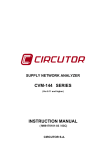
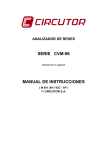
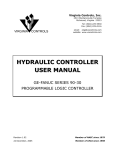


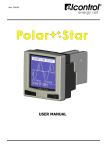
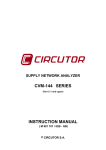
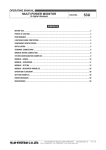
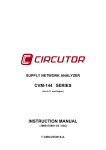

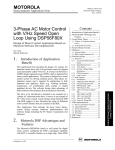
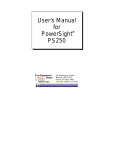
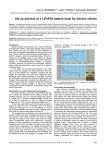


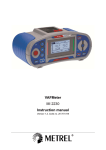
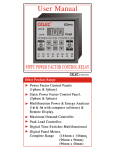
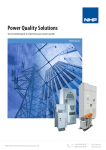
![[ENG] CE16-2 Manuale v2-8](http://vs1.manualzilla.com/store/data/005660444_1-7046d8e9760149eb635bc594076a0e4d-150x150.png)
